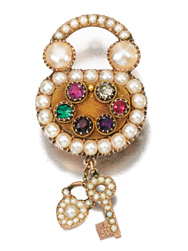Gem - 4 Sections
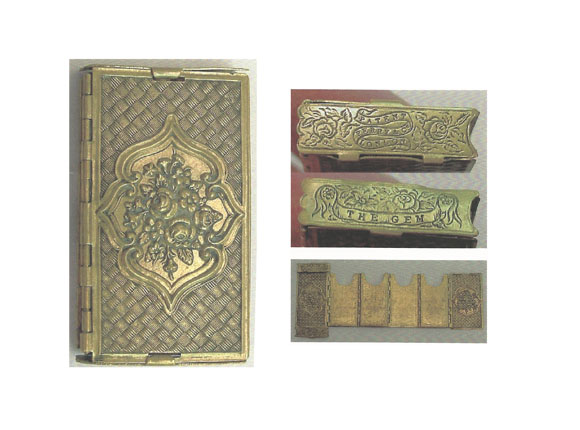
Needle Case (photographs from eBay)
This needle case was sold on eBay years ago and only low resolution photographs are available. If you have this needle case or know
someone who has it, please contact us so better photos can be added to this website.
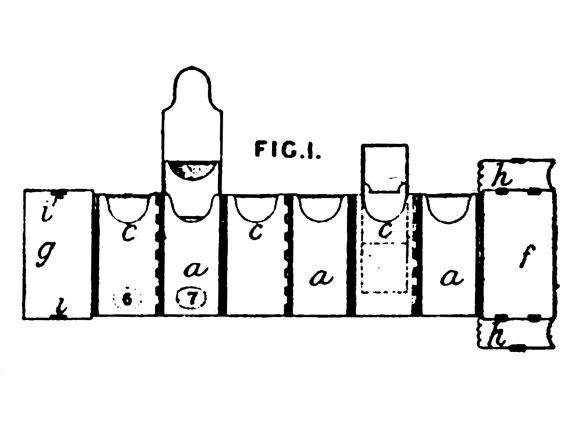
Patent
Design Details
Needle Case Type: |
Accordion |
Patent/Registered to: |
James William Lewis, Die-sinker from Birmingham and George Archbold, Rouge Manufacturer from Handsworth |
Patent/Design Representation #: |
Mechanical Patent: #603 |
Patent/Design Registration Date: |
March 4, 1867 |
Location of Patent/Design Registration: |
British Library - Business and Intellectual Property Centre – London |
Reference #: |
1867-603 |
Dimensions: |
2.6 x 4.6 |
Material: |
Brass |
Name Variations: |
Perry &. Co - London |
Interior Variations |
a) With internal panels with acorn/pineapple pattern on both sides
b) With interior panels with long stem bouquets on both sides |
Other Variations: |
Beatrice - 4 Sections
Beatrice - 6 Sections
Beatrice - Sharpe version
Gem - 6 Sections |
Additional Photographs
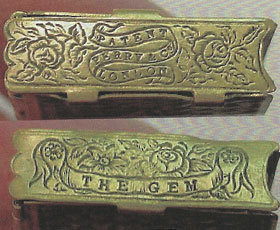
Name and signature details
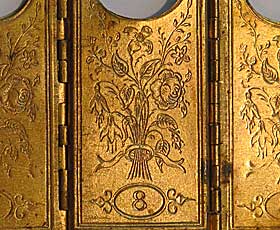
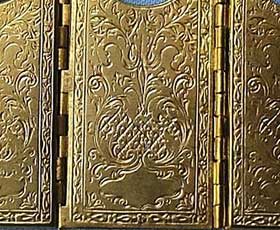
Left: interior panels with bouquet pattern. Right: interior panels with acorrn/pineapple pattern (photo from eBay)
Facts
Gems or gemstones are crystalized mineral or fossilized material that can be cut and polished for use in jewelry or as embellishment on luxury
objects. Since their value is based on rarity all gemstones can be divided into two categories; the diamond, ruby, sapphire and emerald are
known as precious stones whereas all others are considered semi-precious. Gems come in many different shapes and sizes and are usually
multi-faceted which enhances their beauty by reflecting light to make them literally sparkle.
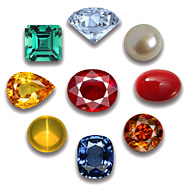
History
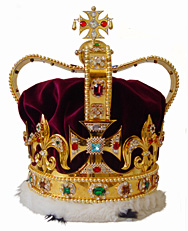
St. Edward's Crown
Gemstones have been around for centuries and were often placed on objects created for rulers and royalty. It wasn’t until late 15th
century that a special cutting-wheel was invented enabling gems to be cut into intricate geometrically faceted patterns, enhancing the light coming
from within the stone. Some of the best know gemstones are found on the Crown Jewels of the British Monarchy. For example the St.
Edward’s Crown pictured above, which was used to coronate many British Kings and Queens since 1661, is made of solid gold and contains 444 precious
stones. In addition over 1,187 elaborately cut diamonds adorn Queen Victoria's small crown shown below. This crown was specially
designed for Queen Victoria to wear on top of her veil while mourning the loss of her husband Prince Albert.
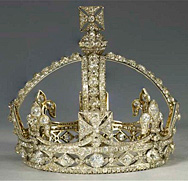
Queen Victoria's Crrown
Miscellaneous

During the 19th century both sentimentality and symbolism were important elements of design. Jewelry with gemstones often contained hidden
meanings, the design representing the feelings or hopes of the giver. For example rings, bracelets or brooches where designed in such a way
that the first letter of each gemstone spelled a word of friendship or special significance. The ring above and the brooch below are set with
a (R)uby, (E)merald, (G)arnet, (A)methyst, (R)uby and (D)iamond spelling out the message "REGARD". This word forms part of the phrase “with my
REGARDs” or “I highly REGARD you,” which in the Victorian period meant the person who gave it held the person receiving it very close to their heart.
